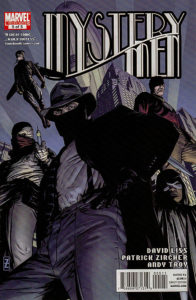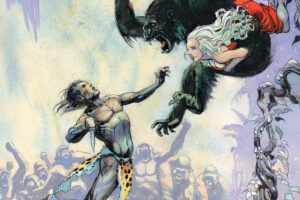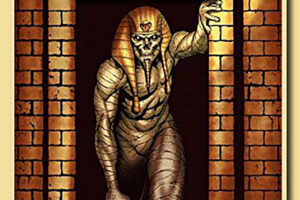 Coming out a couple of years ago, Marvel‘s Mystery Men is a mini-series with pulp elements. (It’s not to be confused with Bob Burden‘s Mystery Men that was the basis for the 1999 movie of the same name.)
Coming out a couple of years ago, Marvel‘s Mystery Men is a mini-series with pulp elements. (It’s not to be confused with Bob Burden‘s Mystery Men that was the basis for the 1999 movie of the same name.)
Created by writer David Liss and artist Patrick Zircher, the idea was to create new characters in the Marvel Universe before the Marvel Universe “started” (basically when the Timely Comics started in 1939). Set in 1932, these characters were more in the line of pulp-inspired, non-powered (usually) “mystery men” as they are called, and were intended to be such.
Five characters are introduced in the series: The Operative, The Revenant, The Surgeon, Achilles, and The Aviatrix. Some are more pulp-inspired than others. They are fighting against the evil General and the supernatural powers behind him.
Now, on to the characters…
The Operative is in the line of characters like The Gray Seal, or some of Johnston McCulley‘s “Robin Hood” characters who steal from the unjust rich and pass it along to the poor. The Operative is actually the son of the General, and has specialized training.
The Revenant is a Shadow-like character. He is a stage magician, who uses such tricks in his activities. He is also black, which is was unheard-of for a pulp hero at the time.
The Surgeon is more like the Dark Man. A real doctor who runs afoul of the General’s group, and is burned up. He has bandaged himself and uses his medical skills against his foes, in a very dangerous way. I actually had a problem with how quickly he recovered from this and got involved in the action.
Achilles is the least like a pulp hero, more like early comic book characters. An archaeologist, he found a mystic necklace, the Achilles amulet, which grants him superpowers and weapons (a shield and sword). He is the only character not to survive the mini-series, though the other heroes retained the amulet, which would allow for a new Achilles.
And the Aviatrix is more a rocket-pack character, though her rocket pack as wings and machine guns. Also, female pulp heroes were pretty rare.
All are united against the General and his forces. They wish to take over the country (similar to the “Business Plot” group that Gen. Smedley Butler spoke of). The General doesn’t survive, and perhaps not his “Board,” but Nox, the supernatural being backing him did. Doctor Strange clashed with her several times. She is the only pre-existing Marvel character to appear in this series.
I am not aware of any of the characters being used further in the Marvel Universe since the mini-series. You can read the collection in hardcover or softcover. But they did not reprint all the text material that appeared in each of the five issues, which were one page of notes on the creation of the series. Only the first and fifth one were reprinted. The end of the series certainly setup things for further stories, but these never appeared.
David Liss moved on to writing The Spider series at Dynamite, along with the Shadow Now series.




Sounds most interesting! (I found some samples of the mini-series’ artwork at http://comicsalliance.com/mystery-men-marvel-preview-liss-zircher/)
Very good book. It put Liss on the map as a comic artist to watch for me.
I think this the first time you’ve covered something I’ve actually read. Good book. I thought it was interesting how the Operative works not only as a gentlemen-thief type character, but also as a deconstruction of Doc Savage. We see his training as a child and how torturous and miserable it was for him. It honestly makes sense that anyone who would force a child to undergo such an intense training regime would potentially be somewhat callous- making the Doc analogue’s father an out-right villain is a nice twist that mitigates a lot of the uncomfortable “child soldier/ domestic abuse” vibes from Doc’s backstory.